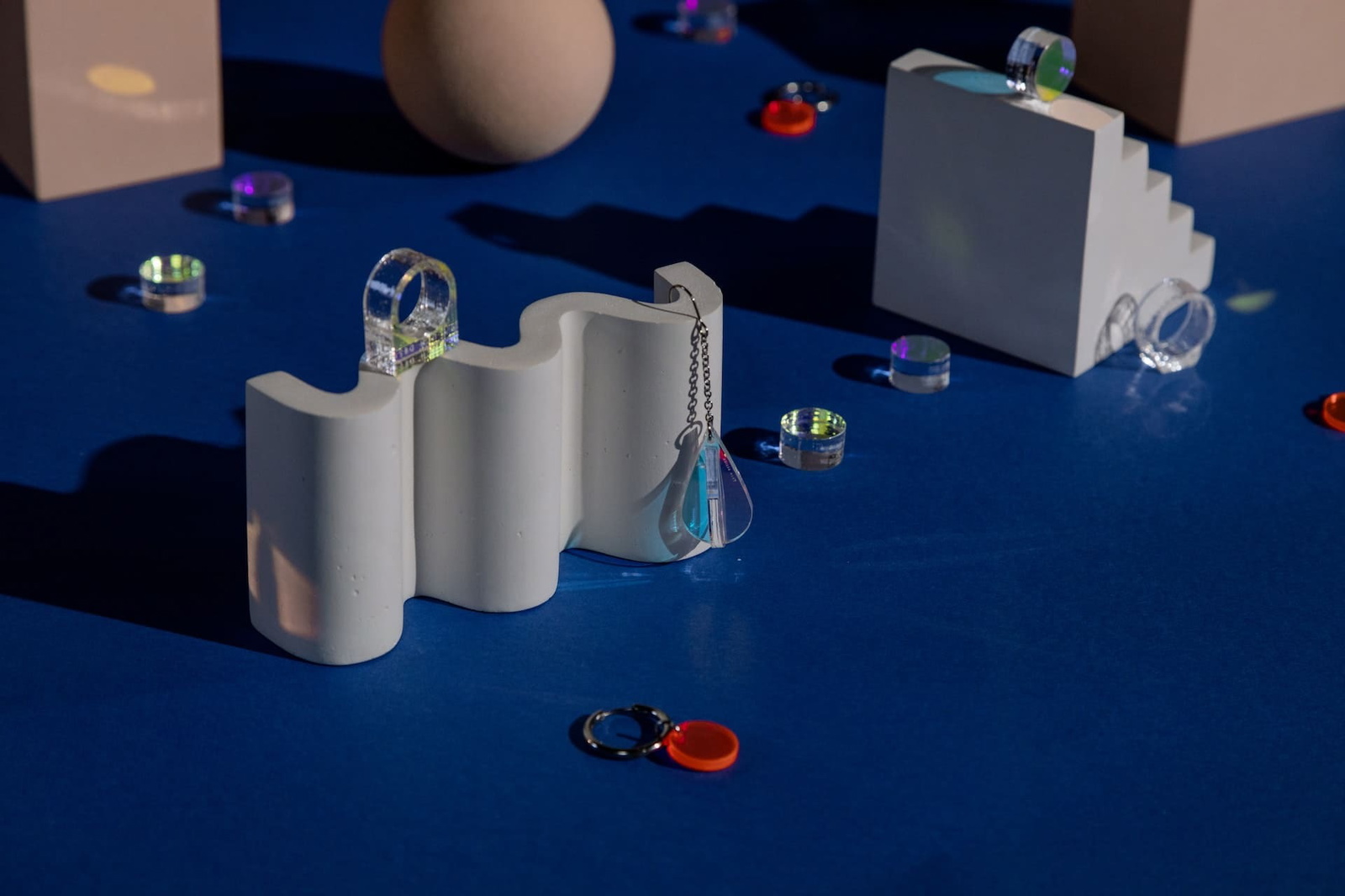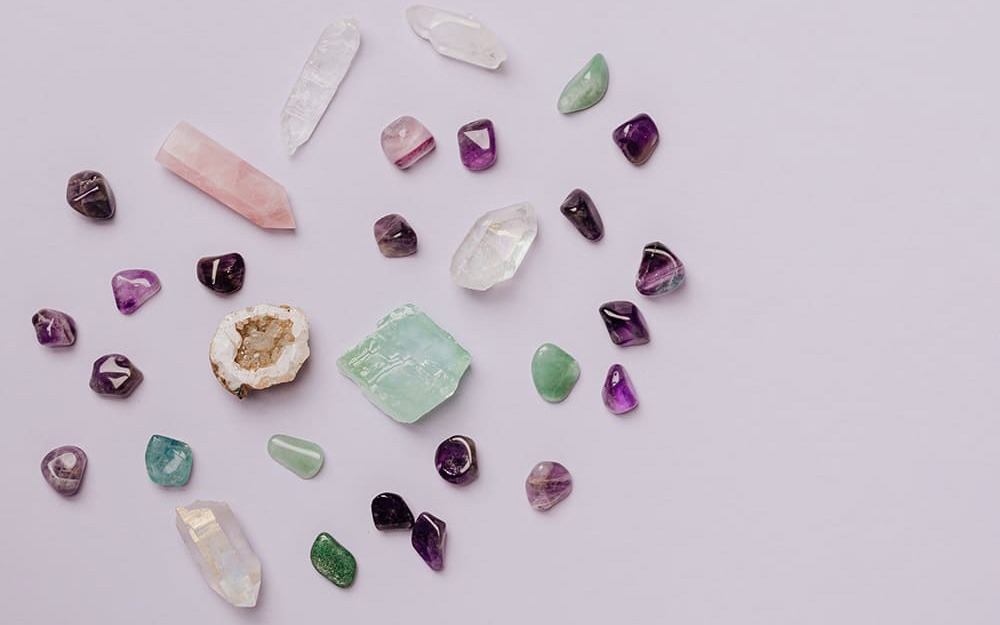It's radical! Enamel jewelry stands out.

The ancient craft of enameling is taking on a completely modern form with colors that shine in this exciting jewelry trend.
The integration of old and new is common in many design disciplines. Think of an Art Deco dresser in a modern living room, a vintage Chanel handbag paired with brand new Max Mara clothing, or antique watches with contemporary leather straps. Contemporary, bolder jewelers who constantly seek ways to make old techniques relevant are modernizing the art of enameling.
The first use of enamel dates back to Mycenae in the 13th century BC, where traces of the material have been found at archaeological sites. The technique of vitreous or hot enamel involves melting powdered glass onto metal, ceramic, or glass. The pigmented powder melts and covers the surface with a smooth and shiny finish. The durability and vibrancy of the color depend on the precisely controlled high temperature during firing, which also affects the texture and opacity of the enamel. French jeweler and enamel specialist, Joséphine de Staël, explains: “Color and material are truly key to vitreous enamel; to achieve the best translucency, you must use fine silver or gold, and the finest powdered glass colors come from Japan.”
Guilloché, champlevé, and cloisonné are just some of the various enameling techniques that have evolved over the centuries. During the Art Nouveau period, plique-à-jour enamel was very popular. The enamel has no backing, allowing light to shine through, like in stained glass, and jewelers like René Lalique skillfully used it. Ms. de Staël continues: “Mastering colors—with their distinct and unique firing points—and the kiln requires years of training. It’s a highly technical form of art requiring true scientific knowledge of melting temperatures, as well as highly intuitive, needing sensitivity to the material.”
In contrast, lacquer and cold enamel are simpler techniques that do not have a vitreous surface but a dense, opaque color block. Instead of starting with powder, resin is applied to the piece and then fired at low temperatures (150 degrees Celsius) to harden. Ms. de Staël explains: “It’s a bit like comparing the best oil painting (vitreous enamel) with a picture made with poster colors (lacquer/cold enamel). Lacquering is done much more simply and is less risky because with vitreous enamel, you never know what might happen in the kiln, but it doesn’t last as long.”
We’ve looked at jewelers from around the world who use both hot and cold enamel in eye-catching bright colors with dazzling results.
The Baby Vine ring by Bea Bongiasca is a clever balance that delicately places a baby blue topaz on the tip of a silver vine covered in bright red enamel.
Bea Bongiasca, who studied jewelry design at Central Saint Martins in London, leads the way in using enamel in exciting, contemporary forms. She founded her company in Milan in 2013 and is known for playing with all the colors of the rainbow with a focus on bold contrasts. Her Vine collection combines gemstones and enamels in vibrant colors: aquamarine is paired with candy pink enamel, rock crystal stands out against burgundy and amethyst with bright orange for a playful effect.
Florentine diamond rings from Boodles come in light pink, navy, and baby blue, as well as white enamel.
In April 2022, Boodles introduced the Florentine collection. The delicacy of the UK-based jeweler uses enamel in light pink, navy, and baby blue shades, as well as plain white coatings. A touch of deep blue enamel highlights the Ashoka cut diamond, a patented 62-facet diamond cut available exclusively at Boodles in the UK. The Florentine collection also includes high jewelry with impressive emeralds and diamonds in octagonal cuts.
Melissa Kaye supports stacking. The Neon collection is both fashionable and rare, combining fluorescent colors and diamonds.
For a pop of color, look to neon-colored jewelry from New York designer Melissa Kaye. Melissa’s creations, winner of the Next Generation Award for fine jewelry from the Accessories Council in the USA, won’t go unnoticed with their vivid yellow, pink, and green tones. Forget traditional diamond jewelry; Melissa creates dynamic and pop-bright treasures that can be worn in any situation – even better if you stack them.
The Gemma collection by Selim Mouzannar is a playful range made from gold, colored gemstones, and enamel.
Selim Mouzannar from Beirut integrates enamel into several of his iconic collections, such as the Aïda and Gemma rings. Aïda, inspired by the designer’s Middle Eastern heritage, features a diamond star set into a bomb-shaped ring covered with enamel. The enamel has a sparkling and translucent surface mimicking reflections visible in water. In the Gemma jewelry, opaque enamels in an endless range of colors surround and highlight bright central stones, ranging from morganite and tourmaline to aquamarine.
The Neon Amoeba ring by Austy Lee presents a bold contrast between an orange enamel-contoured spessartite garnet and an indigo tourmaline with a purple outline.
Austy Lee, a Chinese jeweler, is inspired by all things psychedelic and uses electrifyingly bright enamel to enhance the intensity of the stone either in the same hue or in a complementary color. Lee’s creations balance architectural lines with striking color combinations. The Neon Amoeba ring offers a dramatic contrast between spessartite garnet and orange enamel and indigo tourmaline paired with purple enamel. This young and talented designer continues to surprise with his bold and creative color palette.
Rainbow Sky earrings are in the signature shape of designer Sarah Ho’s creations.
Colorful enamel lines wrap around the edge of the shape and highlight delicate rows of diamonds. Sarah Ho, a lover of color, applies enamel to many of her pieces. The award-winning designer splits her time between London and Monaco and is inspired by flowers and their many color variations, which she translates into her exotic creations. Thin enamel lines create visual connections between gemstones, as well as color contrasts for a captivating optical effect.
These contemporary jewelers who celebrate color in their joyful creations help keep the craft of enameling alive. And even though this technique has existed for millennia, it’s unlikely to bore us anytime soon.

